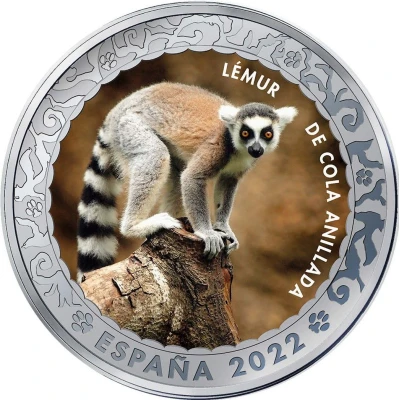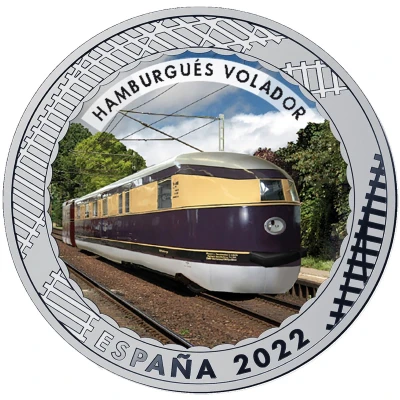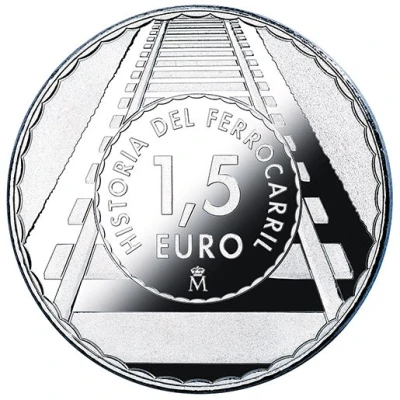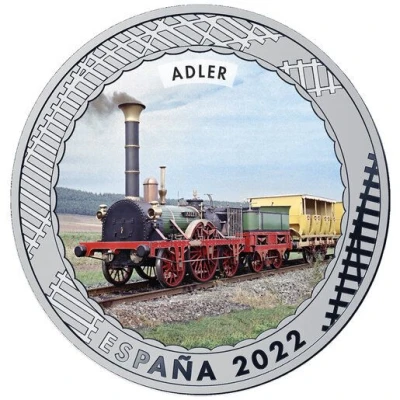
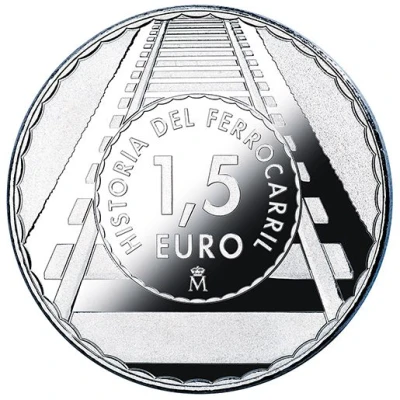

© Real Casa de la Moneda
1.5 Euro Adler
2022 year| Copper-nickel (75% copper, 25% nickel) | 15 g | 33 mm |
| Issuer | Spain |
|---|---|
| King | Felipe VI (2014-date) |
| Type | Non-circulating coin |
| Year | 2022 |
| Value | 1.5 Euro 1.50 EUR = USD 1.65 |
| Currency | Euro (2002-date) |
| Composition | Copper-nickel (75% copper, 25% nickel) |
| Weight | 15 g |
| Diameter | 33 mm |
| Shape | Round |
| Technique | Milled, Coloured |
| Orientation | Medal alignment ↑↑ |
| Updated | 2024-10-07 |
| Numista | N#325706 |
|---|---|
| Rarity index | 92% |
Reverse
Series and face value inside a central circle. Outside the central circle, an image of a railway track.
Script: Latin
Lettering:
HISTORIA DEL FERROCARRIL
1,5 EURO
M
Translation: History of railways
Edge
Plain
Comment
For the year 2021, since the European Year of the Rail and the 80th Anniversary of Renfe are celebrated, the FNMT-RCM issues a collection of 20 coins dedicated to the History of the Railways. This series reproduces a selection of trains and locomotives that have been relevant throughout its history.Adler: Germany joined the railway era on December 7 1835, when Louis I, Duke of Bavaria, inaugurated a short railway line of barely six km between Nuremberg and Fürth. As the first two autochthonous locomotives, made in 1816 and 1817, proved to be unsuccessful, the English Adler (Eagle) is considered to have been the first locomotive to run in Germany. Given that the railway’s promotor, Johannes Scharrer, had failed in the attempt to acquire the locomotive’s component parts in Germany, he had no alternative but to order them urgently from Robert Stephenson & Co.
The first seven locomotives to run on German tracks came from the United Kingdom (6) and the United States (1). However, the year of 1841 witnessed the dawn of a period in which foreign suppliers were gradually yet quickly substituted so that, by 1845, 52 percent of new locomotives came from Germany’s own plants.
The Adler was sent to Germany unassembled and had to be rebuilt at the workshop of Wilhelm Späth. Despite its historical importance, information about this locomotive is surprisingly scant. According to specialists, it was a Patentee, introduced by Robert Stephenson on October 7 1833. It was noted for the fact that the additional driving axle enabled a larger boiler. It had a working pressure of 4.2 kg/cm2; two cylinders; a driving wheel with a diameter of 1,371 mm; maximum power of 41 hp; and a top speed of 65 km/h. The Adler operated with fully satisfactory results for 20 years. A reconstruction of the locomotive, executed in 1935, is on display at the German Railway Museum in Nuremberg.
Interesting fact
The 1.5 Euro (Adler) 2022 coin from Spain features an image of an eagle, which is a symbol of power, strength, and freedom in many cultures.
Price
| Date | Mintage | VG | F | VF | XF | AU | UNC |
|---|---|---|---|---|---|---|---|
| 2022 M | 7000 | - | - | - | - | - | - |
Values in the table are based on evaluations by sales realized on Internet platforms. They serve as an indication only for 1.5 Euro (Adler) 2022 coin.
